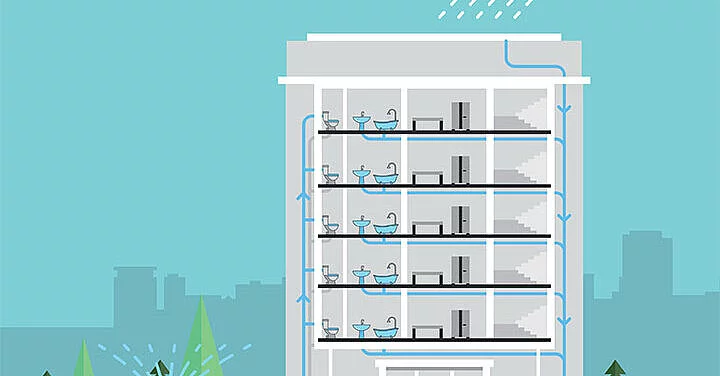
- All municipalities interested in adopting water saving ordinances, including Barcelona, go to Sant Cugat del Vallès. This municipality approved its first water saving regulation in 2002 and updated it in 2008 and 2018 to make it more restrictive.

Currently, in Catalonia some thirty municipalities have approved ordinances to force the use of gray waters in the new buildings. But it remains a minority policy, because there is not too much legislation on this, neither autonomous, nor the Spanish State.
In the case of Barcelona, the government of Jaume Collboni has determined that the new ordinance will require all major promotions and rehabilitations of 16 or more houses to implement these water use systems. The proposal is now in the participatory process and is expected to be adopted by the end of the year.
In a house in Barcelona, less than 100 liters are consumed per inhabitant per day. An estimated one-third of them, about 35 liters, are flushing the toilet. This amount can be covered with water from showers, bathtubs and sinks that use an average of 40-50 liters (80 liters in hotels), according to estimates of the municipal company Barcelona Cicle de l'Aigua. Grey waters include dishwasher, sink and dishwasher, which are not taken into account in re-use facilities as they may contain fats, detergents and other chemicals.
How does it work?
Firstly, buildings fitted for savings must have three differentiated piping systems. On the one hand, the drain of gray waters that brings them to the basement. It usually places the deposit where the filtration process is carried out. Once it is healed, the water is pumped back up to all homes to fill the tanks. And the third tube flushes black water. This complexity of the piping system is only feasible in new promotions or comprehensive rehabilitations, according to administrations and experts.
The economic variable is included in the minimum size of buildings. In Sant Cugat del Vallès they believe it is profitable from eight homes. In Barcelona 16 have been raised. "At first it's a big investment for the labor cost and the value of the equipment, but it's quickly amortized and saved on the water bill," explains Sílvia González, coordinator of Aguas Grises y Aguas Pluviales of Aqua España, association of water companies.
Barcelona City Hall estimates that a facility for a building of 16 homes would cost 760 euros per household, 93 euros per maintenance and 500 m3 of water per year, with a depreciable investment in 10 years. Furthermore, they consider that the economic savings would be more than EUR 150 per annum per household.